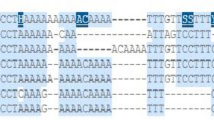Abstract
Only limited information is available so far concerning the human glutathione S-transferase isoenzyme class theta encoded by the GSTT1 gene. The aim of the study was to characterize individuals in respect to a polymorphic deletion of the GSTT1 gene and to validate these results with the phenotypical determination of the “conjugator status” according to Hallier et al. (1993). Determination of the GSTT1 genotype was done in 40 healthy adults by using an assay based on internal standard controlled polymerase chain reaction. The GSTT1-1 phenotype was determined by measuring the erythrocyte conjugating activity towards methyl chloride using a gas chromatographic assay. Genotypically, 34 individuals out of 40 were classified as GSTT1 positive; the remainder were negative. These results could be confirmed by phenotyping in all but one case. In the present study the frequency of “non-conjugators” was 15%. Our study demonstrates the reliability of the suggested PCR assay for GSTT1 genotyping which is easier to perform than the phenotyping assay and is not affected by confounding factors.
Similar content being viewed by others
Author information
Authors and Affiliations
Additional information
Received: 30 August 1995 / Accepted: 12 October 1995
Rights and permissions
About this article
Cite this article
Kempkes, M., Wiebel, F., Golka, K. et al. Comparative genotyping and phenotyping of glutathione S-transferase GSTT1. Arch Toxicol 70, 306–309 (1996). https://doi.org/10.1007/s002040050278
Issue Date:
DOI: https://doi.org/10.1007/s002040050278




